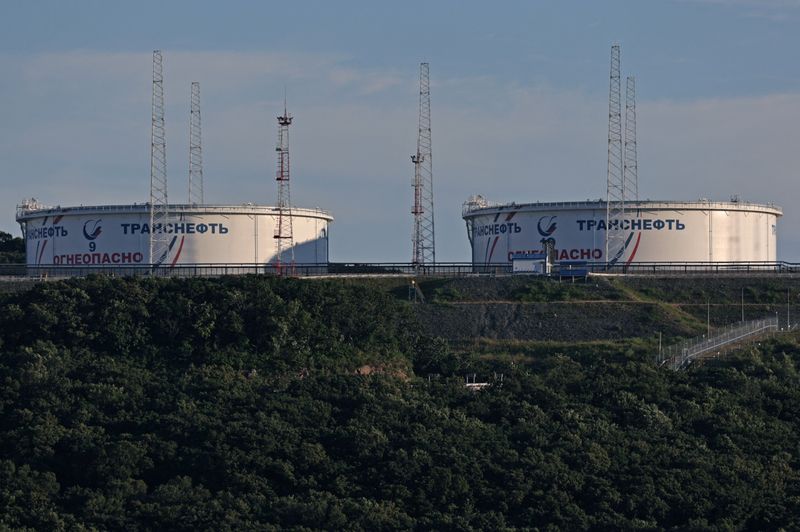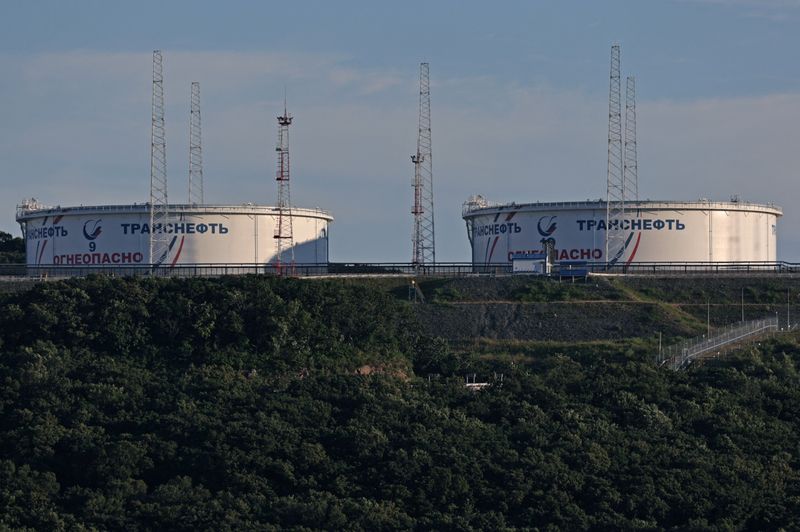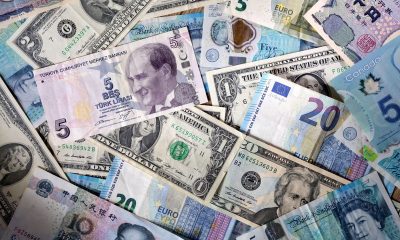Commodities
Oil drops as China demand concerns counter supply jitters


© Reuters. A view shows oil tanks of Transneft oil pipeline operator at the crude oil terminal Kozmino on the shore of Nakhodka Bay near the port city of Nakhodka, Russia August 12, 2022. REUTERS/Tatiana Meel
By Shariq Khan
NEW YORK (Reuters) -Oil prices fell more than a dollar a barrel on Monday as China’s ailing property sector sparked demand worries, causing traders to reassess the supply risk premium from escalating tensions in the Middle East.
futures fell $1.15, or 1.4%, to settle at $82.40 a barrel, while U.S. West Texas Intermediate crude futures dropped by $1.23, or 1.6%, at $76.78 per barrel.
Both contracts settled lower for the first time in four sessions as attention shifted to demand concerns in China, where a real estate crisis deepened with a Hong Kong court ordering the liquidation of property giant China Evergrande (HK:) Group.
The deepening real estate crisis is a blow to investor confidence in the top oil importer’s economy, with earlier data showing slower than expected activity.
“The situation in China is the biggest headwind to the whole market, that is why the market keeps backing off from the war risk premium,” said John Kilduff, partner at Again Capital LLC.
Both benchmarks had gained about 1.5% early in Monday trade, with Brent prices touching their highest since early November after a fuel tanker was hit by a missile in the Red Sea and U.S. troops were attacked in Jordan near the Syrian border. The events mark a major escalation of tensions that have engulfed the Middle East.
However, following the news from China, some market participants questioned how much the risk premium should be as oil supplies have not yet been directly affected by the Middle East crisis.
“Currently we are seeing a premium of around $10 a barrel when it should really just be $3 or $4 based on true petroleum demand fundamentals,” said Gary Cunningham, director at energy advisory firm Tradition Energy.
Meanwhile, lingering high interest rates were also in focus after European Central Bank policymakers were unable to reach a consensus on Monday over when interest rates should be cut.
Russia, meanwhile, is likely to cut exports of naphtha, a petrochemical feedstock, by between 127,500 and 136,000 barrels per day – about a third of its total exports – after fires disrupted operations at Baltic and Black Sea refineries, according to traders and LSEG ship-tracking data.
Another Russian oil facility came under attack on Monday, with Russian authorities indicating they had thwarted a drone attack on the Slavneft-YANOS refinery in the city of Yaroslavl.
oil and distillates inventories were expected to have reduced last week while gasoline stocks were seen rising, according to a preliminary Reuters poll.
The American Petroleum Institute will publish its U.S. stockpiles data on Tuesday around 4:30 pm ET. Official data from the Energy Information Administration is due on Wednesday at 10:30 am ET.
Commodities
Oil prices rise; U.S. crude inventories plunge, Russia-Ukraine truce eyed
Commodities
India’s Reliance to stop buying Venezuelan oil over US tariffs, sources say
Commodities
Oil prices climb on Venezuela supply worries

 Forex3 years ago
Forex3 years agoForex Today: the dollar is gaining strength amid gloomy sentiment at the start of the Fed’s week

 Forex3 years ago
Forex3 years agoUnbiased review of Pocket Option broker

 Forex3 years ago
Forex3 years agoDollar to pound sterling exchange rate today: Pound plummeted to its lowest since 1985

 Forex3 years ago
Forex3 years agoHow is the Australian dollar doing today?

 Cryptocurrency3 years ago
Cryptocurrency3 years agoWhat happened in the crypto market – current events today

 World3 years ago
World3 years agoWhy are modern video games an art form?

 Commodities3 years ago
Commodities3 years agoCopper continues to fall in price on expectations of lower demand in China

 Economy3 years ago
Economy3 years agoCrude oil tankers double in price due to EU anti-Russian sanctions



























